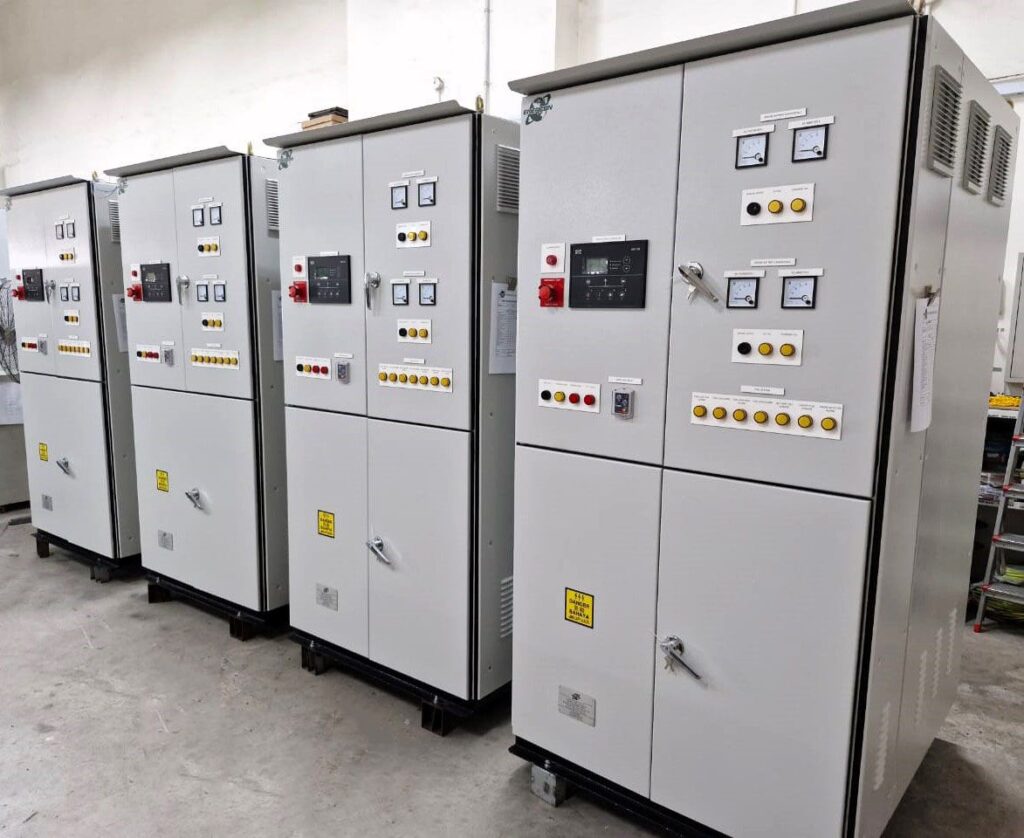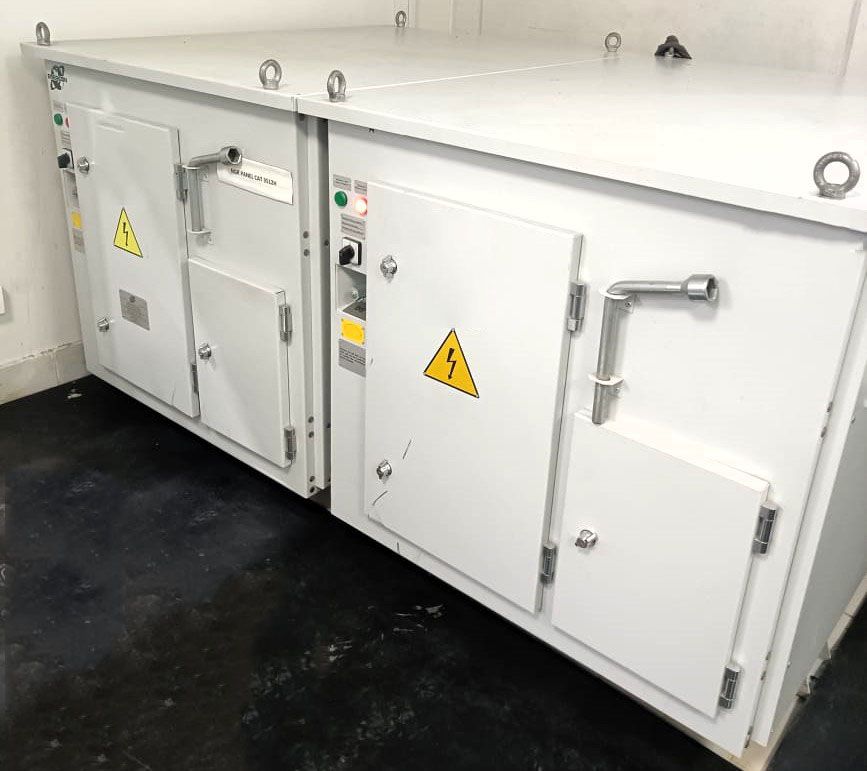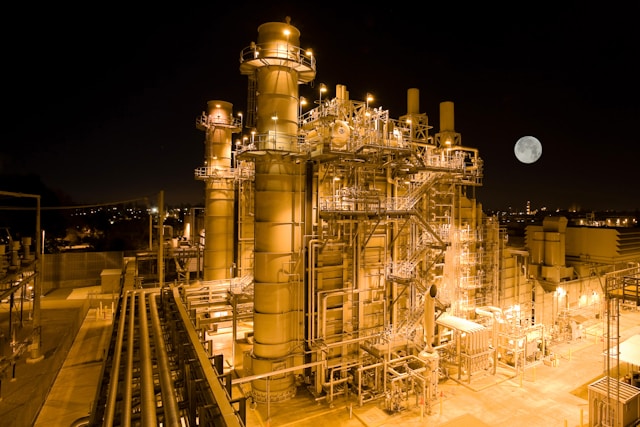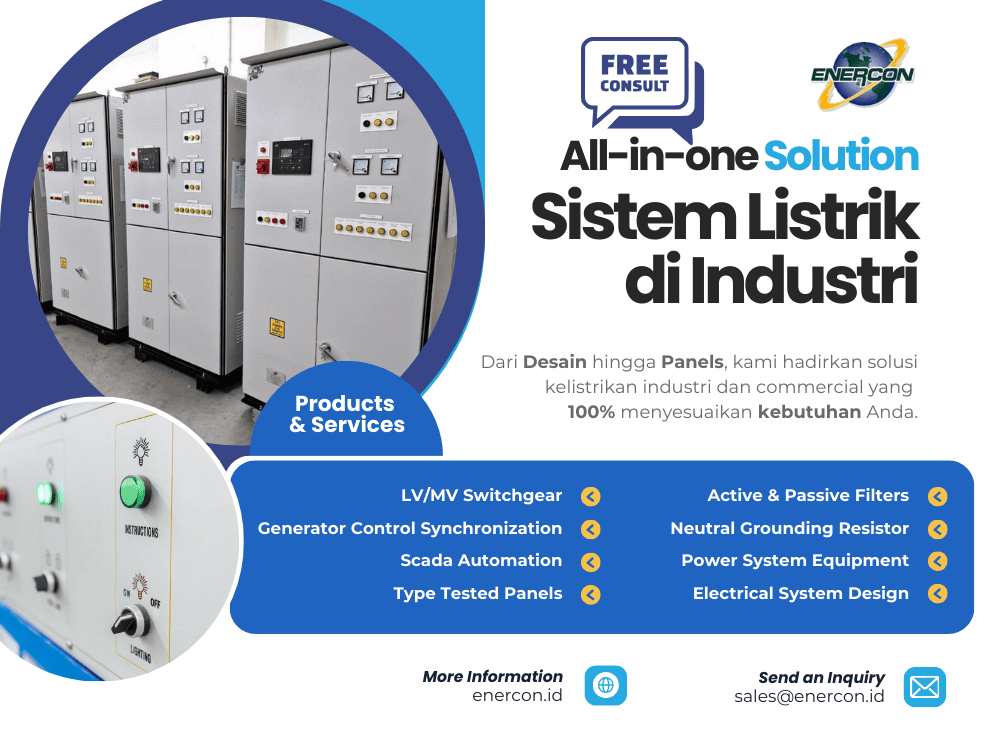Harmonic distortion might sound like a technical term reserved for textbooks, but it’s a real-world problem that affects the efficiency and lifespan of industrial power systems.
If left unchecked, harmonic distortion can cause equipment failures, unnecessary energy losses, and even affect the power quality of the entire facility. With industrial systems relying more on non-linear loads such as Variable Frequency Drives (VFDs), the problem of harmonic distortion is becoming increasingly significant.
This article explores the best ways to reduce harmonic distortion, focusing on practical, actionable solutions tailored for industrial power systems.
What is Harmonic Distortion?
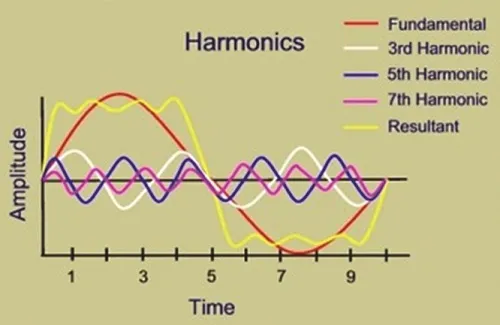
To understand how to reduce harmonic distortion, we first need to define what it is. Harmonic distortion occurs when the electrical current or voltage waveform deviates from a pure sine wave due to the presence of harmonics—integer multiples of the fundamental frequency.
Harmonics are typically generated by non-linear loads, which are common in industrial systems, such as variable frequency drives, uninterruptible power supplies (UPS), and other electronic devices.
For instance, a standard VFD used in motor control may draw current in a non-linear fashion, introducing harmonics into the system. These harmonics then interfere with the fundamental electrical signals, leading to distortion. Understanding how these harmonics are generated and their impact is the first step in mitigating their effects.
Key takeaways:
- Harmonic distortion disturbs the smooth flow of electrical energy.
- Non-linear loads, especially in industrial settings, are a common source of harmonics.
Why Harmonic Distortion is a Problem in Industrial Power Systems
Harmonic distortion presents several challenges, especially in industrial power systems that rely on continuous, high-quality electrical supply to function efficiently. Here are the primary concerns:
- Increased Losses and Overheating
Harmonics cause additional heating in motors, transformers, and other electrical equipment. This excessive heat can lead to premature wear, reducing the lifespan of these expensive components. - Premature Equipment Failure
Components like capacitors and power transformers can suffer from harmonic-related stresses, ultimately resulting in equipment failures. This not only increases maintenance costs but can also lead to unexpected downtime, which can severely impact production processes. - Impact on Power Factor Correction Devices
Harmonics can interfere with power factor correction capacitors, which are often used to maintain efficiency in industrial power systems. This interference reduces the effectiveness of power factor correction, leading to penalties from utilities and reduced system efficiency. - Harmonics and Power Quality Standards
Maintaining power quality is essential for compliance with standards such as IEEE 519, which sets harmonic limits for industrial power systems. Failing to control harmonics can lead to non-compliance, risking legal and operational consequences.
Example: Imagine an industrial plant where critical equipment overheats due to harmonic distortion, resulting in production downtime for repairs. By addressing the harmonics proactively, this situation—and the associated financial losses—can be avoided.
Read: How to Conduct a Commercial Building Energy Audit: Step-by-Step Guide

Methods to Reduce Harmonic Distortion in Industrial Power Systems

Now that we’ve established the problem, let’s delve into the solutions. The following are proven methods to mitigate harmonic distortion, especially for large-scale industrial setups:
1. Active Harmonic Filters
Active harmonic filters (AHFs) are a highly effective solution for reducing harmonic distortion. These filters dynamically adjust to the system’s harmonic content, actively cancelling out the harmonics by generating counter-harmonic currents.
How They Work: AHFs monitor the electrical network and inject compensating currents into the system, neutralizing the unwanted harmonics. This real-time approach makes them particularly useful in environments with variable loads.
Pros:
- Can adapt to changing load conditions.
- Provides a highly precise reduction in harmonics.
Cons:
- Higher initial cost compared to passive filters.
- Requires regular maintenance to ensure optimal performance.
Example Application: AHFs are commonly used in facilities with variable-speed motors, such as in the automotive manufacturing industry, where harmonic distortion can fluctuate frequently depending on production needs.
2. Passive Harmonic Filters
Passive filters are a more traditional approach to mitigating harmonic distortion. Unlike active filters, they don’t adapt to changing loads but are designed to block specific harmonics at a fixed frequency.
How They Work: Passive filters use inductors, capacitors, and resistors to filter out harmonics at predetermined frequencies, reducing their impact on the system.
Advantages:
- Lower upfront cost than active filters.
- No need for complex control systems.
Limitations:
- Limited adaptability to variable loads.
- May not be as effective in reducing higher-order harmonics.
Best Use Case: Passive filters are often used in applications with more predictable load profiles, such as in HVAC systems or lighting systems in large industrial plants.
3. Variable Frequency Drives (VFD) with Harmonic Mitigation Technology
Modern VFDs are designed with built-in harmonic mitigation features, offering a two-in-one solution for motor control and harmonic reduction.
Key Features to Look For:
- Low-harmonic VFDs that incorporate passive filtering or active front-end technology to minimize harmonic generation.
- VFDs with multi-pulse rectifier systems that significantly reduce harmonics at the source.
Example: In industries like paper mills or cement plants, where large motors are used and VFDs are common, investing in low-harmonic VFDs can drastically reduce harmonic distortion, leading to improved system performance and lower maintenance costs.
4. 12-Pulse and 18-Pulse Converters
Multi-pulse converters, such as 12-pulse and 18-pulse systems, are a robust way to mitigate harmonic distortion by effectively reducing the harmonics produced by rectifiers.
How They Work: These converters split the input power across multiple phases, reducing the amplitude of harmonics. The higher the number of pulses, the lower the harmonics.
Advantages:
- Highly effective at reducing harmonics.
- Suitable for large-scale industrial applications.
Cost Considerations: While these converters are highly efficient, they come with higher upfront costs compared to standard converters or filters, making them best suited for industries where long-term reliability is critical.
5. Transformers and Phase Shifting
Transformers designed for harmonic mitigation use phase-shifting techniques to reduce harmonics. By shifting the phase angle of different harmonic-producing loads, transformers can effectively cancel out certain harmonics.
Best Practices:
- Install delta-wye transformers to reduce zero-sequence harmonics.
- Use phase-shifting transformers to target specific harmonics in industrial systems.
Example: Transformers with harmonic mitigation features are commonly used in large industrial plants with high levels of harmonic-producing equipment, such as steel mills or refineries.
6. Improving System Design and Load Management
One of the most effective long-term strategies for reducing harmonic distortion is proper system design. This involves planning ahead during the initial design phase to ensure harmonic-producing loads are well-balanced and appropriately placed within the power system.
Proactive Measures:
- Balanced loads: Keeping the system balanced reduces the risk of harmonics. An unbalanced load generates additional current harmonics, which can interfere with the system.
- Non-linear load placement: Strategically placing non-linear loads in different sections of the facility reduces their combined harmonic impact.
Example: In a food processing plant, ensuring that non-linear loads like refrigeration units are spread out can minimize the harmonic impact on the overall system, leading to smoother operations and reduced equipment strain.
Read also: How to Achieve Voltage Stability in Industrial Power Systems
Standards and Guidelines for Harmonic Distortion in Industrial Systems
Maintaining power quality and adhering to established standards is critical for industrial systems. The IEEE 519 standard provides guidelines on acceptable levels of harmonic distortion in power systems.
Key Takeaways:
- Total Harmonic Distortion (THD) limits are set based on voltage levels and system characteristics.
- Industrial systems must regularly measure and monitor their THD to ensure compliance with IEEE 519.
Monitoring and Measuring Harmonic Distortion

Effective harmonic control starts with understanding the current state of your power system. Monitoring and measuring harmonic distortion is not just a one-time activity; it’s an ongoing process that ensures your system remains within acceptable harmonic levels, maintains compliance with standards like IEEE 519, and avoids unexpected equipment failures.
Best Tools and Methods for Measuring Harmonic Distortion
1. Power Quality Analyzers
Power quality analyzers are essential tools for diagnosing harmonic distortion. They measure parameters like voltage, current, and harmonic content, providing a detailed snapshot of power quality issues. Some advanced analyzers offer real-time monitoring, trend analysis, and the ability to store historical data.Example: In a manufacturing plant with a large number of motors and VFDs, a power quality analyzer can be used to measure Total Harmonic Distortion (THD) at different points in the system to pinpoint where harmonics are being generated and at what levels.
2. Fixed Monitoring Systems
For large industrial facilities, fixed monitoring systems provide continuous data on harmonic distortion. These systems are integrated into the power network and can alert facility managers when harmonic levels exceed predefined thresholds, allowing for quick interventions.Example: A steel mill using multiple large induction motors can benefit from a fixed monitoring system to continuously monitor harmonic levels and ensure they remain within acceptable limits, especially during peak load times.
3. Handheld Power Meters
For smaller facilities or troubleshooting tasks, handheld power meters offer a portable solution to quickly assess harmonic distortion. While less comprehensive than fixed systems, these meters provide a convenient way to conduct spot checks and identify potential issues.Example: A facility engineer can use a handheld power meter to assess harmonic distortion at different points in a small plant, identifying any areas that need further analysis or mitigation.
4. Data Logging Software
Many modern power quality analyzers and fixed systems come with software that allows for data logging and analysis. This is crucial for long-term trend monitoring, enabling engineers to identify patterns, predict future harmonic issues, and plan for maintenance.Why It Matters: Having access to historical data can help in making informed decisions about when to upgrade equipment, adjust load configurations, or install new harmonic mitigation devices.
The Importance of Continuous Monitoring for Long-Term Harmonic Control
Harmonic distortion is not static—it can fluctuate with changes in load, new equipment installations, or operational shifts. Continuous monitoring helps ensure that any increases in harmonic distortion are caught early before they result in equipment damage or system inefficiencies.
Key Benefits:
- Early Detection: Continuous monitoring allows for the early detection of harmonic issues before they cause significant damage.
- Compliance Maintenance: Ensures that systems remain compliant with standards like IEEE 519, avoiding penalties or disruptions.
- Operational Efficiency: Improves overall system efficiency by maintaining power quality at optimal levels.
Read: SCADA vs PLC: Which is the Best Choice for Industrial Automation?
Case Study in Harmonic Reduction in an Industrial Power System
To illustrate the importance and effectiveness of harmonic mitigation, let’s examine a real-world example of an industrial facility that successfully reduced harmonic distortion through targeted interventions.
Case Study: Reducing Harmonics in a Chemical Manufacturing Plant
Background:
A large chemical manufacturing plant experienced frequent equipment failures and overheating issues in its critical motors and transformers. After a power quality audit, it was determined that the primary cause was excessive harmonic distortion generated by several large VFDs used to control pumps and fans throughout the plant.
Problem:
The facility’s harmonic distortion levels were well above the limits set by IEEE 519, leading to frequent breakdowns, increased energy consumption, and costly downtime.
Solution Implemented:
- Active Harmonic Filters (AHF) were installed to dynamically cancel out the harmonics generated by the VFDs. These filters provided immediate relief by injecting compensating currents into the system, reducing the Total Harmonic Distortion (THD) to below 5%, in compliance with IEEE standards.
- Passive Harmonic Filters were installed in specific areas where load profiles were more stable. These filters helped reduce the cost of harmonic mitigation in sections of the plant that didn’t require the adaptability of AHFs.
- System Design Adjustments: The facility’s electrical design team restructured the layout of non-linear loads, such as pumps and fans, balancing them across different phases to further reduce harmonic generation at the source.
- Continuous Monitoring System: A permanent power quality monitoring system was installed to provide real-time data on harmonic levels and send alerts if levels approached unsafe limits.
Results:
- Equipment Life Extended: The plant saw a significant reduction in motor and transformer overheating, leading to fewer breakdowns and extended equipment life.
- Energy Savings: By reducing harmonics, the plant experienced an overall improvement in power quality, which resulted in a 10% reduction in energy consumption.
- Compliance Achieved: The plant’s harmonic levels were brought into full compliance with IEEE 519 standards, avoiding potential fines and improving overall operational efficiency.
Conclusion
In industrial power systems, harmonic distortion isn’t just a minor issue—it can significantly affect equipment performance, energy efficiency, and regulatory compliance. By implementing effective strategies like active and passive filters, multi-pulse converters, and thoughtful system design, industrial facilities can drastically reduce harmonic distortion. These measures ensure smoother operations, extend equipment lifespan, and enhance overall energy efficiency.
However, harmonic control is not a one-time fix. Continuous monitoring and regular system evaluations are crucial to maintaining optimal power quality. Staying proactive with these efforts helps prevent costly downtime, avoid equipment failures, and ensure that facilities remain in compliance with important standards such as IEEE 519.
At the end of the day, achieving long-term harmonic control requires a combination of technical expertise, the right tools, and strategic planning. By following the solutions outlined in this article, you can ensure your power systems run efficiently and reliably for years to come.
Ready to Take Control of Harmonic Distortion? Enercon Indonesia is Here to Help
If your facility is struggling with harmonic distortion, Enercon Indonesia is your trusted partner for efficient, targeted solutions. Our team of experts specializes in identifying and mitigating harmonics, offering customized solutions such as active and passive filters, system design improvements, and ongoing monitoring services.

We’re committed to helping you achieve better power quality, extend the life of your equipment, and optimize energy usage. Contact us today for a consultation and let us help you take control of harmonic distortion—efficiently, effectively, and with long-term success in mind.
Enercon Indonesia – Your Expert Partner in Power System Reliability!

